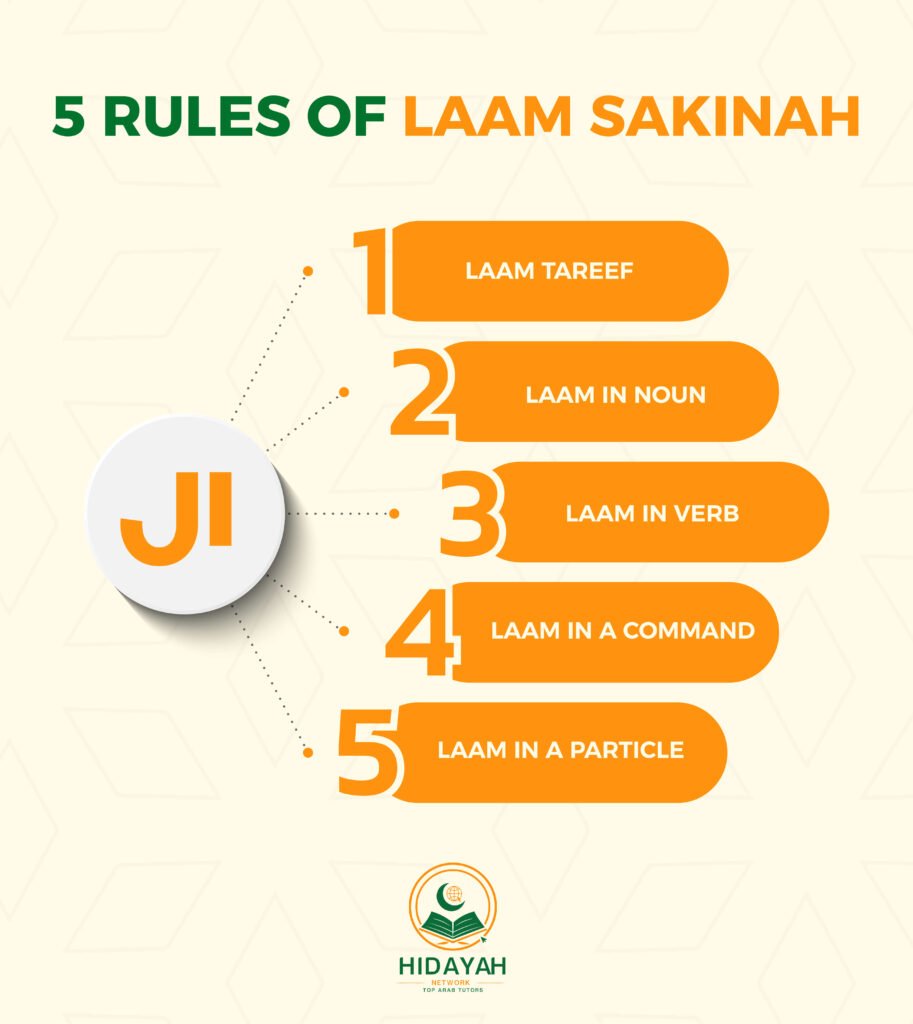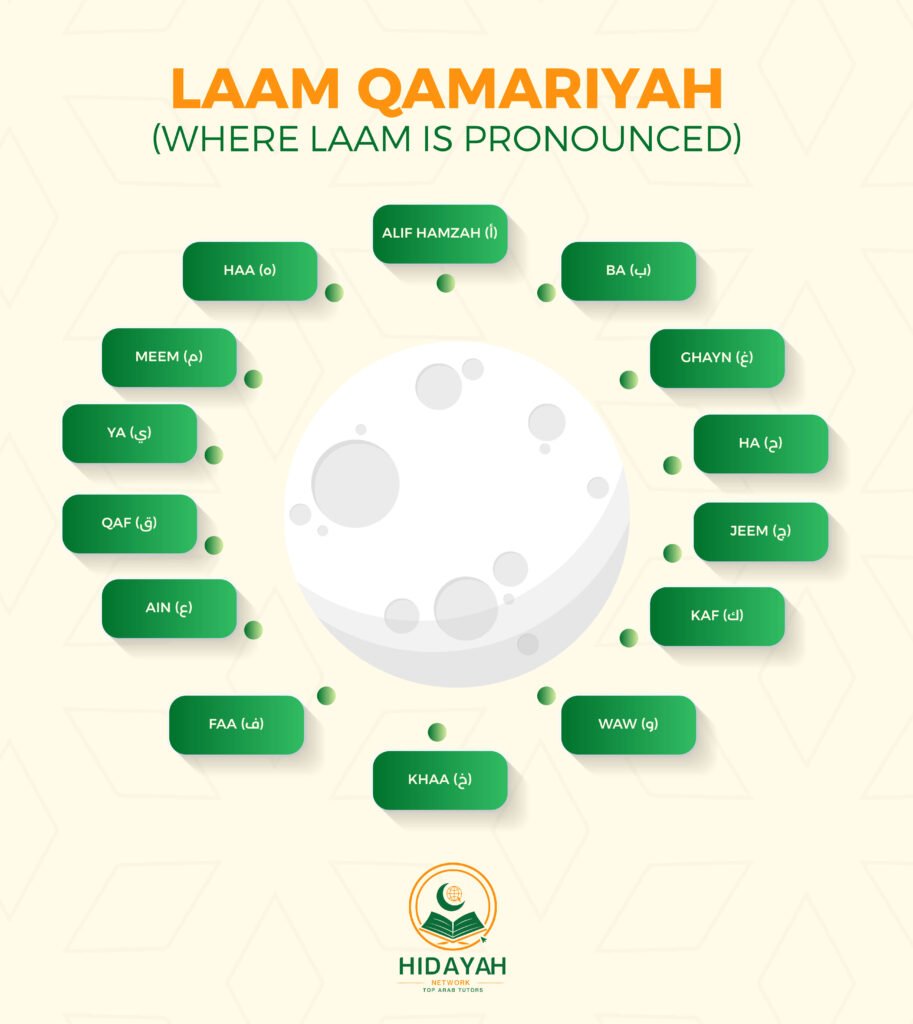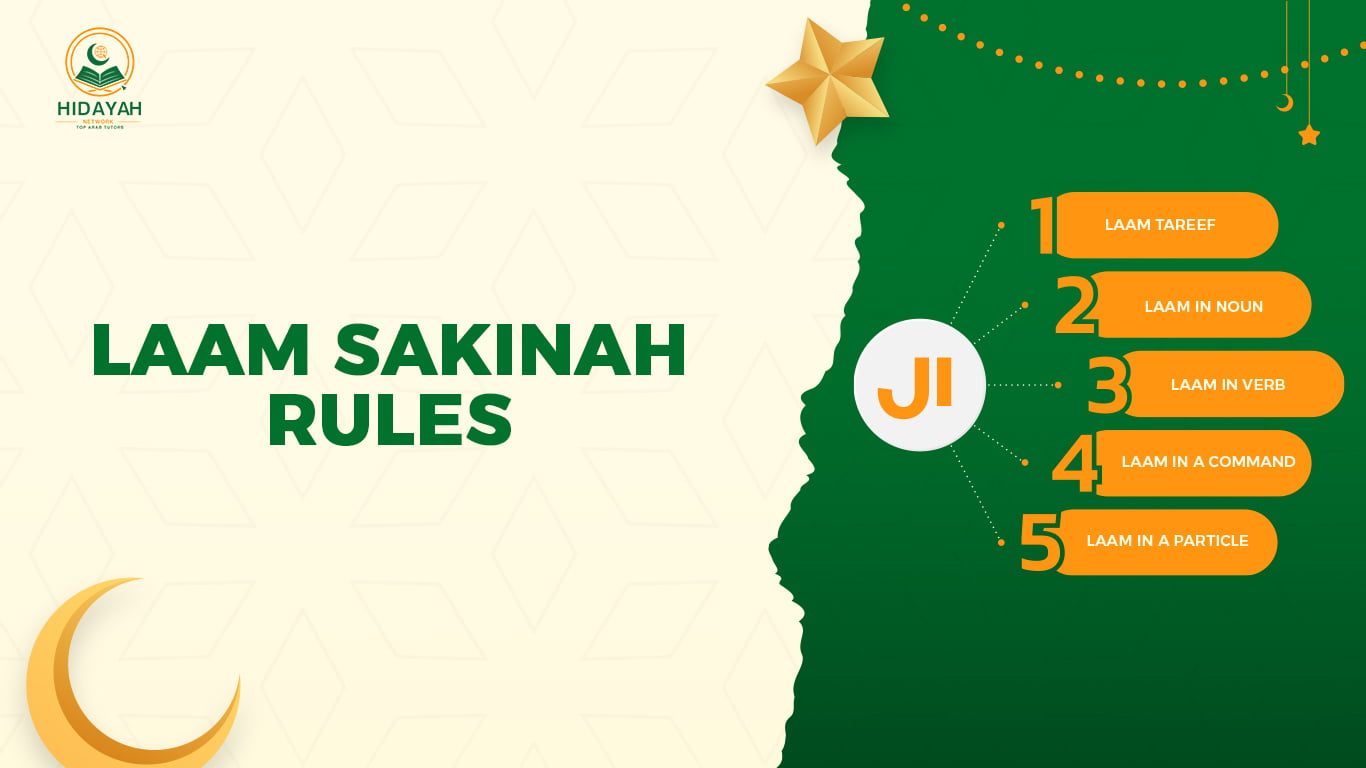The beauty of Quran recitation lies in understanding the words, meanings and the musical and accurate recitation of its verses. Tajweed plays a vital role in achieving this goal. According to Ibn Al-Jazari, the famous Tajweed scholar,
The practical application of Tajweed is, without doubt, compulsory. Whoever does not read the Quran correctly is a sinner.
Allah revealed the Quran to our Prophet Muhammad SAWW with Tajweed and commanded him to recite its verses, meditate and understand their meanings, and beautify their recitation to be different and distinct from other textual readings. Hence, it is crucial to learn Tajweed to recite the Quran flawlessly. Mastering the rules of “Laam Sakinah” is an important aspect of Tajweed.
Understanding and implementing the rules of Laam Sakinah is crucial for reciting the Quran accurately. Mastering the rules of Laam Sakinah allows the reciter to pronounce this letter correctly while maintaining the flow and rhythm of the recitation.
What is laam sakinah?
Lam Sakinah is a term used in Arabic phonetics, particularly in the context of Quranic recitation. It refers to the “silent” or “non-vocalized” letter “ل” (lam) when it occurs at the end of a word and is not followed by any vowel. This letter is pronounced without any vowel sound.
For Example:
كَلِمَة (kalimah) – In this case, the “ل” is followed by a vowel, so it is pronounced fully.
سَلاَم (salam) – The “ل” here is pronounced without a vowel.
فَلا (fal) – The “ل” is sakin, making it silent in terms of vowel sound.
In Quranic recitation, lam sakinah can affect the way words are pronounced, especially when considering the rules of Tajweed (the art of Quranic recitation). For instance, if it is followed by a certain letter, it might be pronounced with a specific rule (like idgham or iqlab).
The articulation point of ( ل ) lam letter:
It is from the nearest part of the sides of the tongue and the end of its tip, and what lies opposite to it of the gums of the first two upper premolars, the two upper canines, the two upper lateral incisors and the two upper front incisors.
There are 2 types of laam, heavy and light. If there is fatha or damma on the letter coming before laam ل , it will be read with a full throat with a heavy voice like in the words:
- Yasha Allah
- nasrul-Allah
On the contrary, if there is a kasrah sigh on the letter before laam ل, the laam will be read lightly like in the words:
- Bismil-Allah
- Fil-Allah
Get 40% OFF Now!
5 Rules Of Laam Sakinah With examples
To learn Quran with Tajweed successfully, you must understand the rules of Laam Sakinah in detail. There are 5 main rules for Laam sakinah. Let’s advance further and learn each in detail

1. Laam Tareef
It is an extra laam that comes before a common noun to make it a proper or specific noun. It is preceded by hamza tul wasl which is only written and not pronounced. The reason we call it an extra laam is that if we take it away from the noun, the meaning will not change.
Look at the example:
- کتاب (book), if we add ال before it, it will become الکتاب (a specific book).
- رجل (man), if we add ال before it, it will become الرجل ( a specific man)
We have 2 categories of Laam Tareef.
1. Laam Qamariyah (where Laam is pronounced).
The rule to pronounce the laam here means to do Izhaar/making clear. You will clearly utter the laam if these letters come after it:
- Alif Hamzah (أ)
- Ba (ب)
- Ghayn (غ)
- Ha (ح)
- Jeem (ج)
- Kaf (ك)
- Waw (و)
- Khaa (خ)
- Faa (ف)
- Ain (ع)
- Qaf (ق)
- Ya (ي)
- Meem (م)
- and Haa (ه)

2. Laam Shamsiyyah (where Laam is not pronounced).
The rule to pronounce the laam here means to do Idgham/merging. The letters that will merge with Laam are:
- Ta (ط)
- Tha (ث)
- Saad (ص)
- Ra (ر)
- Ta (ت)
- Dhaad (ض)
- Dhaal (ذ)
- Noon (ن)
- Daal (د)
- Seen (س)
- Dhaad (ظ)
- Zay (ز)
- Sheen (ش)
- and Lam (ل).

Examples of Laam Qamariyah
- Al-Awwal الأول
- Al-Insan الإنسان
- Al-Batin الباطن
- Al-Ghafoor الغفور
- Al-Hakeem الحکیم
- Al-Jabbar الجبار
- Al-Kabeer الکبیر
- Al-Wadood الودود
- Al-Khaliq الخالق
- Al-Yaqeen الیقین
Try finding out more examples from the Quran and practice them by clearly pronouncing the Laam Tareef.
Examples of Laam Shamsiyah
- At-Tayyib الطیب
- At-Tariq الطارق
- As-Saffa الصفاء
- Ar-Raheem الرحیم
- Ar-Rahmaan الرحمن
- Ad-Dua الدعا
- As-Salaam السلام
- Az-ZuaAlmeem الظالمین
- Ash-Shakireen الشاکرین
- Az-Zakat الزکاة
Try finding out more Laam Shamsiyah examples from the Quran and practice them by merging Laam Tareef.
2. Laam in Noun
It is the Laam sakinah in the noun and comes in the middle of it. Thus, the meaning of the word is incomplete without its presence. Let’s read out the examples where laam sakinah comes in the middle of the noun.
- Sultaan سلْطان
- Alfafan ًالْفافا
- Al-Haleem الْحلیم
Note: If you are a beginner and want to excel in the Tajweed rules, read out our top 16 tips to learn Tajweed and apply them while reciting the Quran.
3. Laam in Verb
Laam in a verb comes in any form; present, past, order. It can come in the middle or the end of present and order tense but for past tense it can only come in the middle and never in the end. Because the past tense in Arabic always ends with a Fatha movement on it like قَالَ Qala (he said).
- Ja’alna جعلْنا
- Al-hakum الْحاکم
- Yatawakal alal la یتوکلْ علی الْله
- Alam Akul الم اکلْ
- Wa alqi asaaq والْق عصاک
Laam in the verb is always clearly pronounced as Izhaar except for the rule followed by laam or Raa ر. If you see laam or Raa ر after laam saakin in the verb then you will merge.
- Wa Qur-Rabbi وَ قُلْ رَّبی and not Wa Qul Rabbi
- Wa Qulla- huma و قُلْ لَّھما
Hidayah Network offers a structured Tajweed course for adults where you will learn the rules of Laam Sakin along with other mandatory Tajweed rules in detail. All the types of Laam sakinah will be taught with practical examples from Surahs.
4. Laam in a command
This is an extra Laam than the letters of the original word followed by present tense and preceded by faa ف, waa و, or Summa ثم. For example, we say Yektub یَکْتُب ( he is writing) if we add laam in the beginning as liyaktub لِیَکْتُبْ ( he should write) or falyaktub فَلْیَکْتُب (he must write) or Thumma liyaktub ثمَّ لِیَکْتُبْ (again, he must write)
- Fal yastajeebu فَلْیَسْتَجِیبُو
- Wal yumlil وَلْیُمْلِل
5. Laam in a particle
If Laam Sakin appears at the end of the particle and if the first letter of the second word is Laam or Raa, we apply Idghaam, i.e., the Laam merged into the following letter such as هَل لَّكُم ، بَل رَّب. If (hall) and (bal) appear before any other letter, you will do Izhar, say it clearly.
- Bar- Rafa’ahu بَل رَّفَعَهُ
- Hal- lakum ْھَلْ لَّکُم
- Bar-Rabbi ِبَل رَّب
Conclusion
We have thoroughly explored the written and spoken examples of Laam sakinah, and we believe that readers have gained a clear understanding of the rules. We aim to explain all the grammar rules to help Muslims improve their recitation of the Quran with Tajweed and deepen their understanding through repeated examples.
We welcome both kids and adults to join our online Tajweed classes, where each rule is explained in great detail with an in-depth analysis of examples from the Quran. Take a free trial class to check out the process.

About Author

